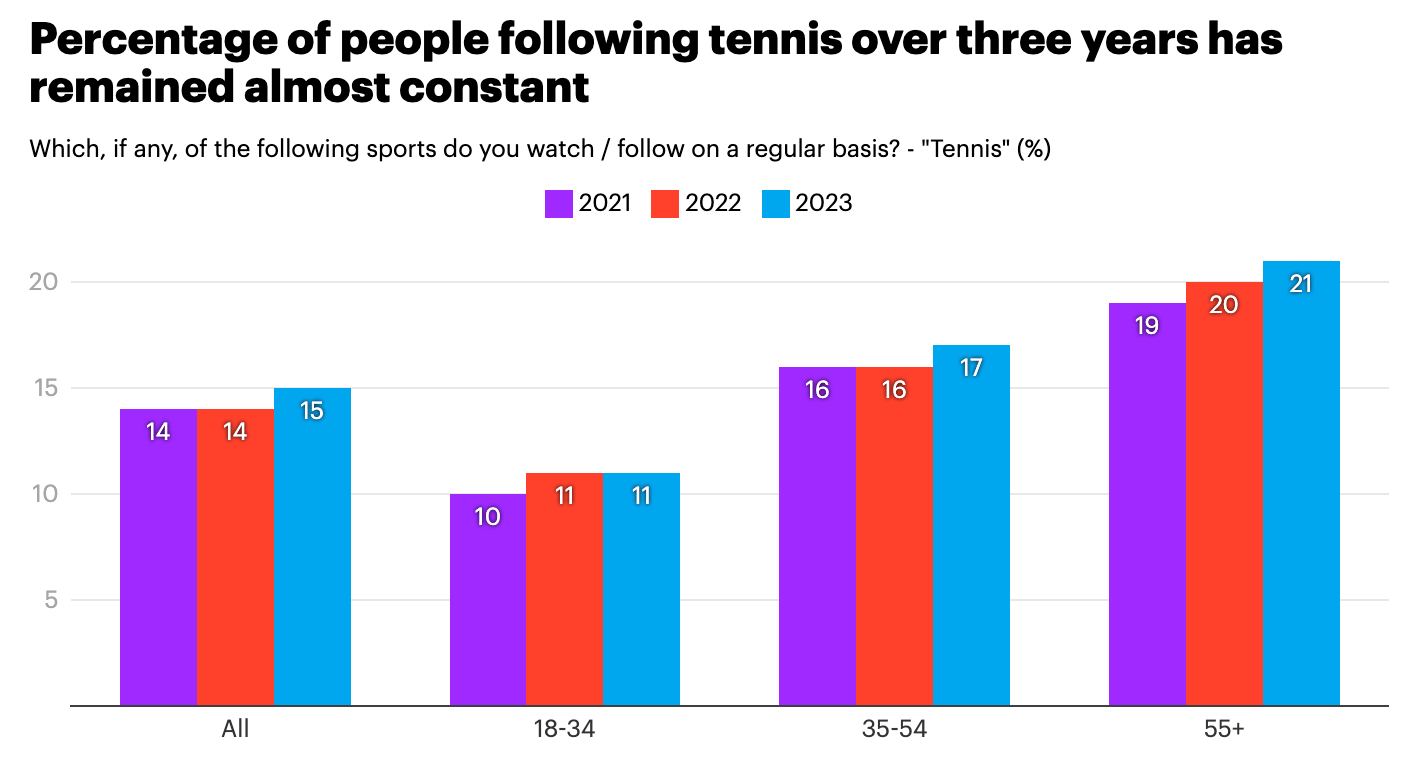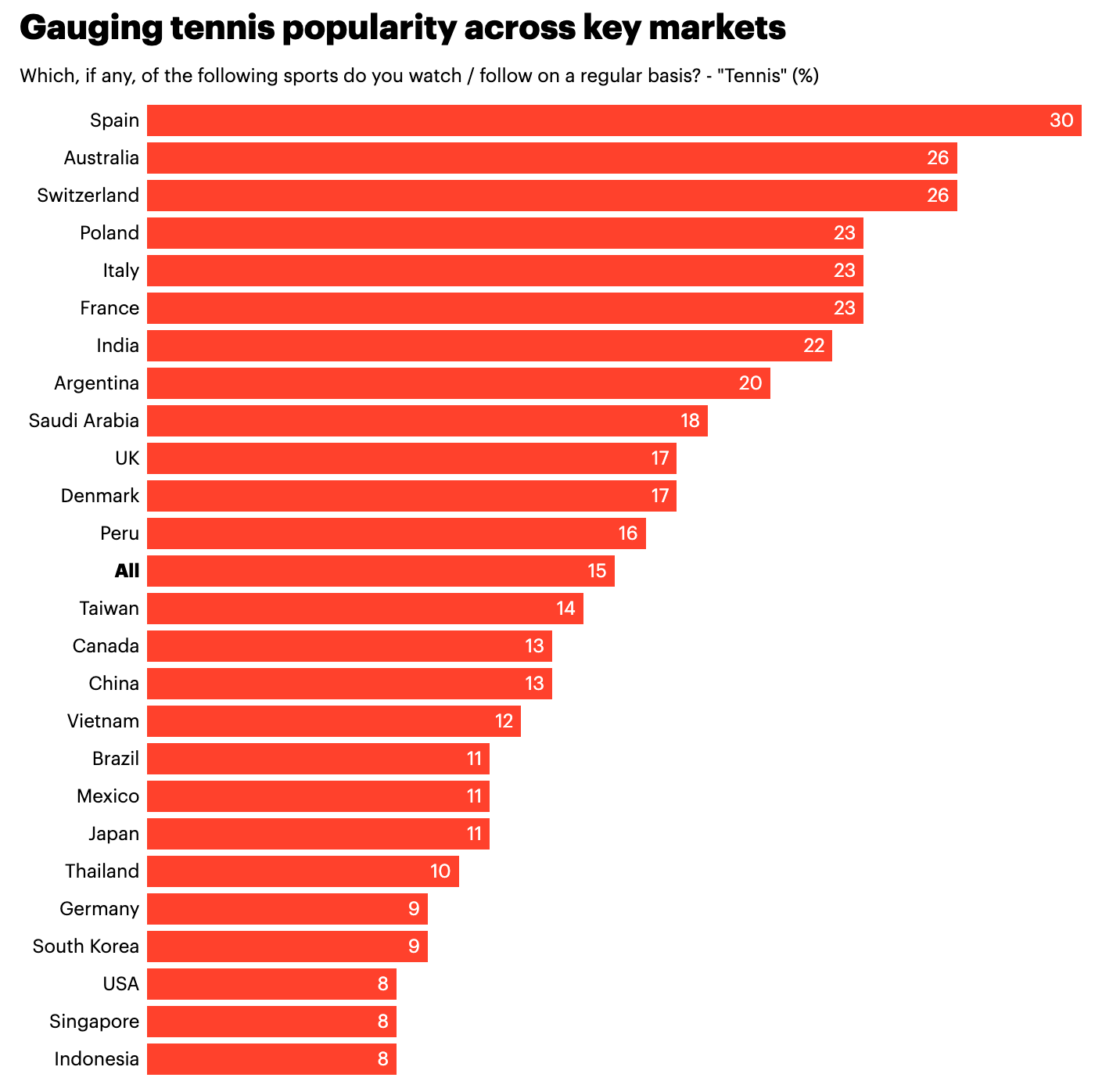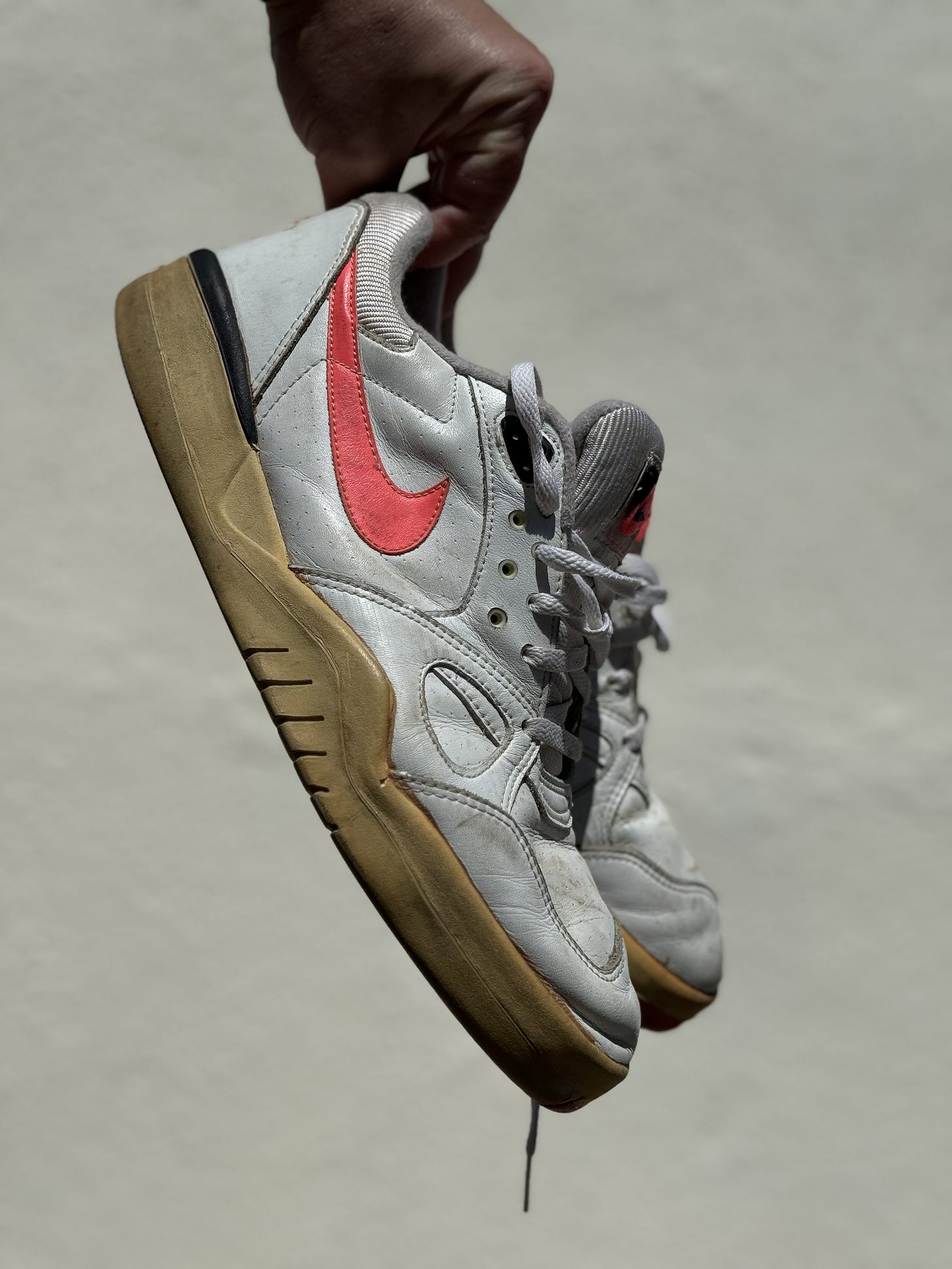Tennis shoes deserve more credit.
I hate calling them that. Tennis sneakers or tennis kicks also sound weird. I completely understand why Nike rebranded the category to “Nike Court” all those years ago, but unfortunately, I think they are still missing the big picture to solution to the world of…ugh…tennis shoes.
In the latest episode of the Sneaker History Podcast, we went down a bit of a rabbit hole in regards to tennis shoes and one question from it is still bouncing around in my mind a bit.
How is a category of footwear so rich with nostalgia, incredible footwear designers, and global superstars, so disconnected from the mainstream sneakerhead consumer?
There is a reason that the term “tennis shoes” has stuck around all these years. It’s not the ease in which it rolls off the tongue. It’s not the skyrocketing popularity of the sport, because according to YouGov stats, the sport’s popularity is basically the same over the past few years, despite two of the all-time greatest athletes in the sport retiring. It’s still, like Kleenex, the most widely used term for athletic footwear. Across the globe, tennis shoes have stood the test of time amongst the countless slang-terms and slang-terms-turned-mainstream designations like sneakers, trainers, kicks, etc.
The fact that tennis shoes as a phrase is so commonly used would make you think that the priority for brands to make tennis shoes “cool” in order to sell more would be a no brainer. Yet, the category simply never gets the love that it truly deserves. As I’ve said before, I am going to pick on Nike because they are the best, and they are the brand that made myself, and many of you, sneaker enthusiasts in the first place.
One of the repeated sneaker stories of the tennis category is Andre Agassi’s Nike line, which will retro this year with a yellowed midsole as “reimagined.” Personally, I will never want my shoes to come pre-aged, but aside from that, it is exciting to see the potential for a more true-to-original-form release of one of the most iconic sneakers of all time. While I am excited to see the Hot Lava Air Tech Challenge 2 return, it really triggered something in me that I can’t shake.
Tennis shoes have never been given a proper chance compared to other categories. Yes, tennis is not popular in the United States the way it is elsewhere. The same could be said all those years ago when Nike invested in the little-known athletes like John McEnroe and Andre Agassi. That initial risk paid off in big ways that continue to pay off in retro form today. While my colleagues in the footwear industry may say that nobody buys tennis shoes anymore, I would argue that nobody buys any shoes without being educated and excited by the marketing dollars that go into the sport.
Even in the era of faux-tennis pickleball taking over the courts, there is a missing through-line of storytelling that should exist between nostalgia and modern performance court shoes. Yet, as two of the most important people the sport has seen, Serena Williams and Roger Federer, have recently retired, there were only a handful of moments connecting consumers with the early years of these legends, or even further, the legends that inspired them.
It’d be remiss of me to not give some much-deserved credit in the category. Tennis shoes do have their moments, like the recently released Nike Mac Attack, the Travis Scott version, or my personal favorite, the mouthful that is the NikeCourt Zoom Vapor 11 Attack. This trifecta of releases is a rare example of the brand doing it right in terms of releases. Yet, I am sure some of you reading this (who are only subscribed because you like sneakers enough to read my ramblings) have never seen the latter of those nostalgia-driven “Mac Attack” tennis shoes. I applaud the team at Nike that worked on bringing these to market. At the same time, I’m disappointed in their leadership for not appropriating enough budget and energy, to connect the dots from the hype to the nostalgia and modern performance. These releases feel like a three part story told to three completely different audiences, each of which knows very little about the others.
Stories have to inspire, entertain, or educate, and the best of them do all three things. There is no better opportunity to do that in sneakers than in the tennis category.
PS: I posted these on Instagram, the oldest pair of tennis shoes I own, and suggested reading Matt Welty’s interview with Andre Agassi, so I am going to do the same here. Once you read that, I hope you’ll realize how important it is for the sneaker brands and marketing teams behind them to get these stories out there for the next generation of storytelling fans.
If you enjoyed reading this, please support my writing through Patreon, Buy Me A Coffee, or becoming a paid subscriber.






